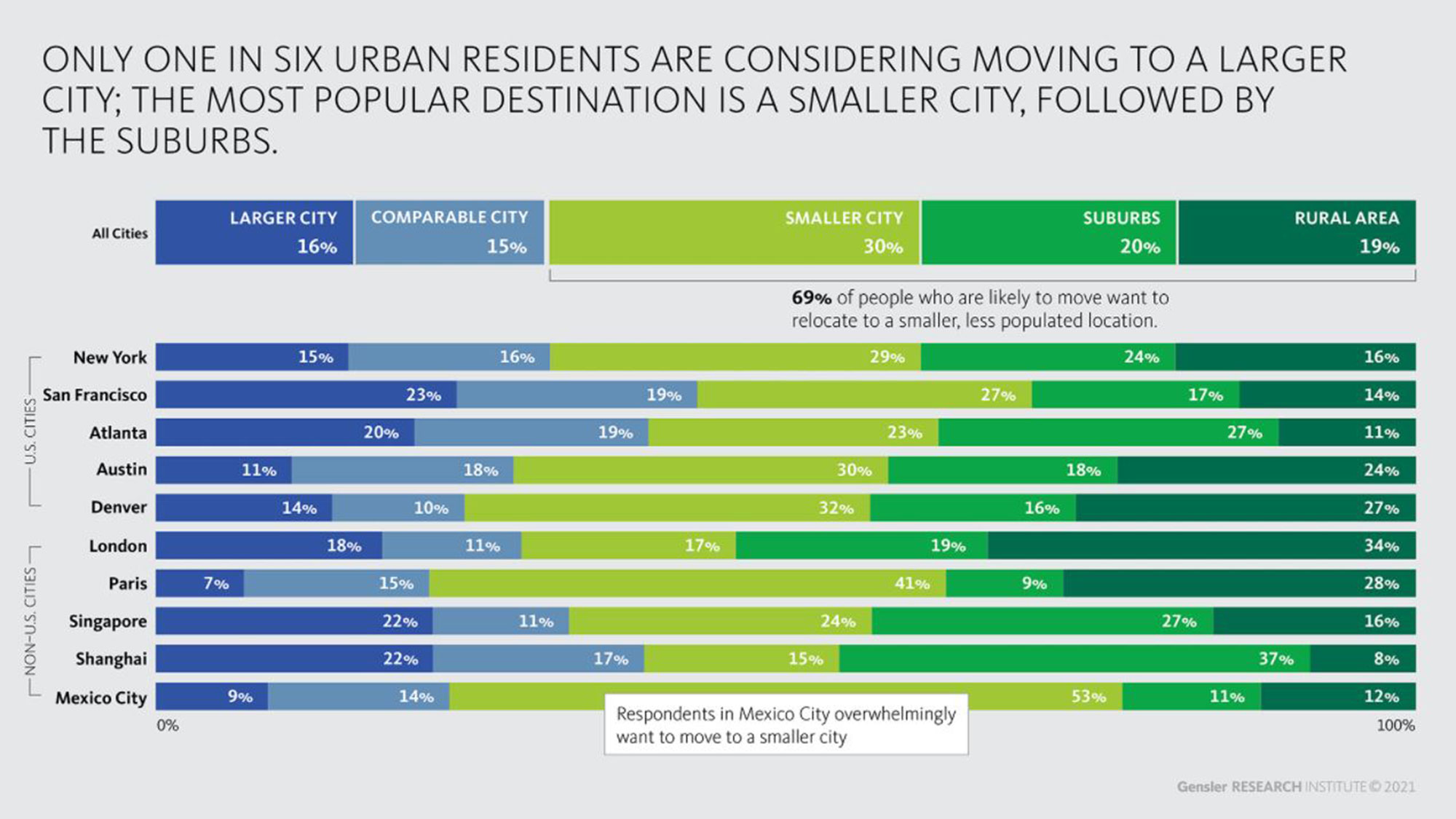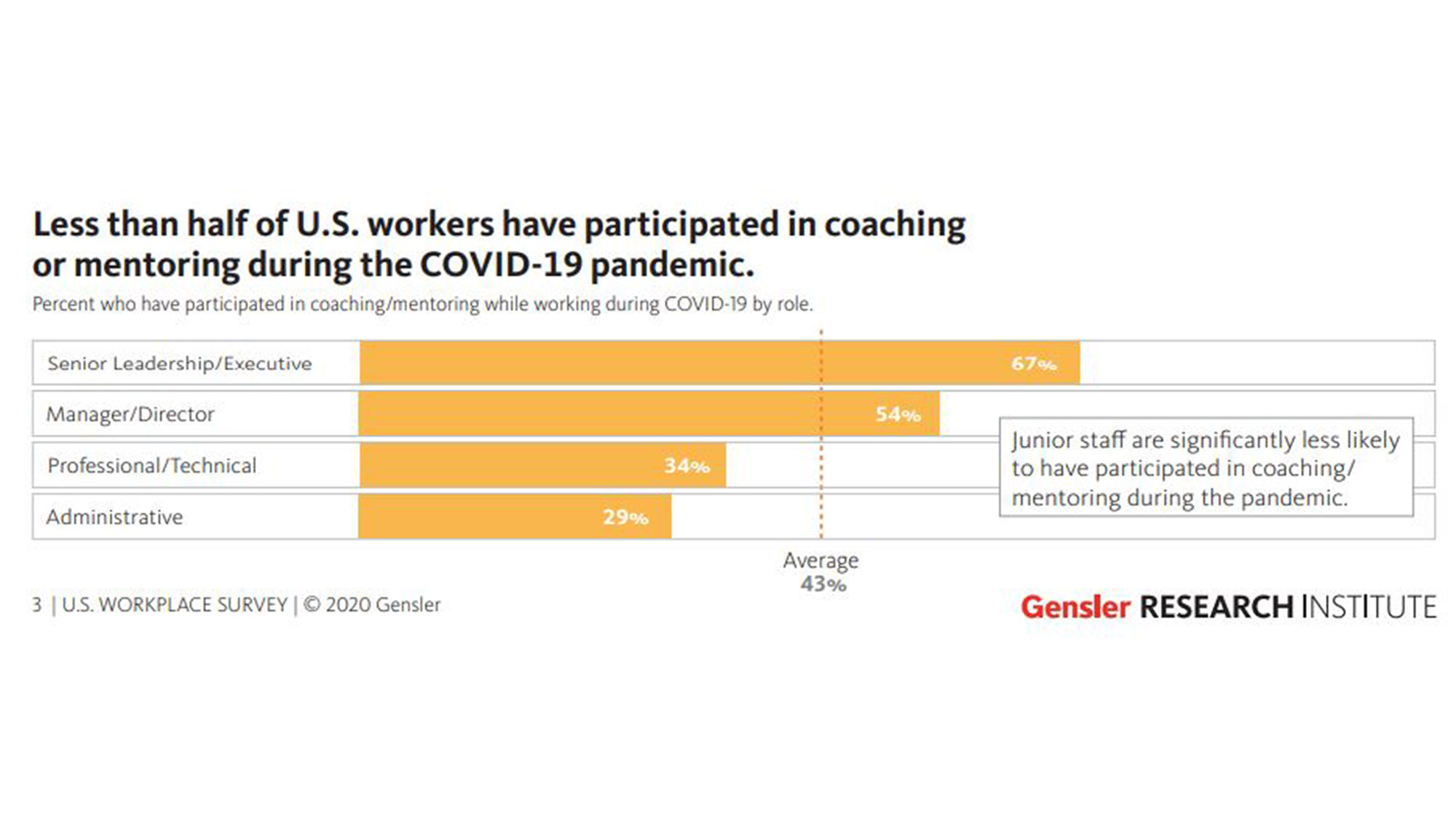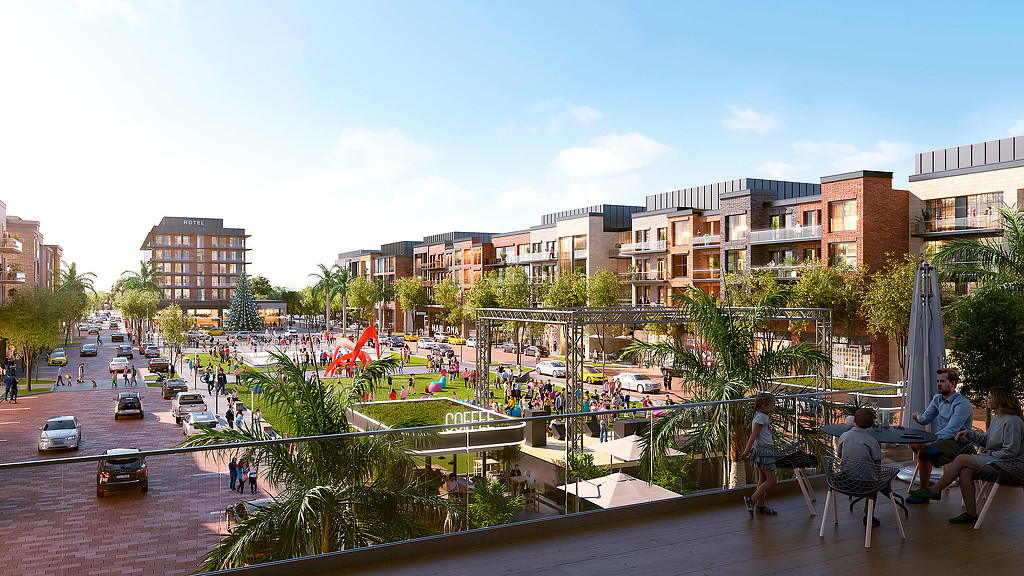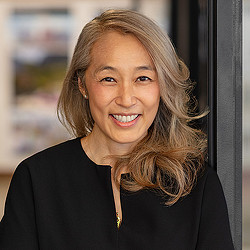Will Remote Work Trends Benefit Smaller, More Affordable Cities?
June 08, 2021 | By Sofia Song, Janet Pogue McLaurin, Stella Donovan
The COVID-19 pandemic has given rise to a new kind of talent war. Hybrid and flexible work policies — once largely relegated as perks for senior-level employees — are in demand like never before. They’re also causing a large number of urban residents to consider moving. According to the Gensler City Pulse 2021 Survey, one in three workers with the ability to work remotely are thinking of relocating away from the city in which they currently live.
As expectations rise for “anywhere work,” the future of the office, and the future of cities (particularly downtowns), are no longer separate questions. Urban areas and organizations will need to rethink how they attract and retain people — especially younger generations of the workforce, who show the highest desire to move and the lowest satisfaction with their current living situations. So, how can cities and workplaces increase their appeal in this new era of flexibility?
Cities need to create a “smaller city experience” by providing great place amenities and tackling affordability issues.We know from our City Pulse Survey 2021 research that the most attractive destination for residents who want to move out of their cities is a smaller city. On average, over half of urban residents have concerns about crowdedness and affordability, and roughly 40% feel that their cities are too noisy. These are just some of the “Big City” problems that are driving people (particularly Millennials, the generation most likely to move due to the pandemic) to seek out less-populated locations. Additionally, our report found that an average of 50% of urban residents feel that their neighborhoods are becoming less affordable, especially in rising cities like Atlanta, Austin, and Denver. Our data indicates that a city’s recovery will hinge on its ability to address cost-of-living concerns.

To keep residents, and attract new ones, cities will need to focus on what people still love about urban living — great neighborhoods, employment opportunities, and multimodal transportation options. Central Business Districts should strive to be less 9-5 and more 24/7, providing place amenities and experiences that keep residents engaged after the work day ends. Rethinking zoning to provide more affordable housing choices is key. As business around the world rethink how much space they need, cities should take the opportunity to convert former office buildings to residential units. Finally, large urban areas should improve infrastructure with features such as increased broadband access and a multimodal approach to transportation — one that delivers the micromobility options that city dwellers crave.
During the pandemic, Gensler conducted several workplace surveys to understand how office workers were coping working from home as well as how, and where, employees want to work in a post-pandemic future. Early in the pandemic, we learned that the younger generations were struggling the most working at home. Millennials and GenZ were finding it hard to avoid distractions and maintain work/life balance. According to a workplace survey we conducted in summer/fall, only half of U.S. office workers had participated in coaching or mentoring, and junior staff members were particularly impacted. They not only missed formal training and professional development at the office, but in the virtual world of Zoom, they missed the informal feedback during the walk back to the desk when meetings are over. And they missed their colleagues, who are often not just a professional network, but part of people’s social network as well. They were anxious to return to the office.

As GenZ and Millennials reimagine a post-pandemic workplace, they prefer a wider range of options for where to work. For all generations, most workers prefer being at home for reading, writing, and many individual tasks. However, there is wider variation in the preferred locations for in-person feedback, informal collaboration, and socializing with colleagues: for many younger workers, third places outside the office are the preferred location. We also saw this when we recently surveyed workers in China, who are already back to the office, and are spending 22% of their time working remotely at coworking sites, alternative office locations, and third places as an extension of their office space. In other words, working remotely is not binary for younger generations — the neighborhood and city are activated as well. Companies who locate their office space in walkable, vibrant neighborhoods can use third places as an extension of the office to attract and retain talent.
These findings from the Gensler City Pulse Survey and our global workplace surveys show that the pandemic year presents opportunities for both cities and organizations to adapt to the evolving expectations of the workforce. As we navigate the post-pandemic world, one thing remains clear: the future is human-focused.
For media inquiries, email .



